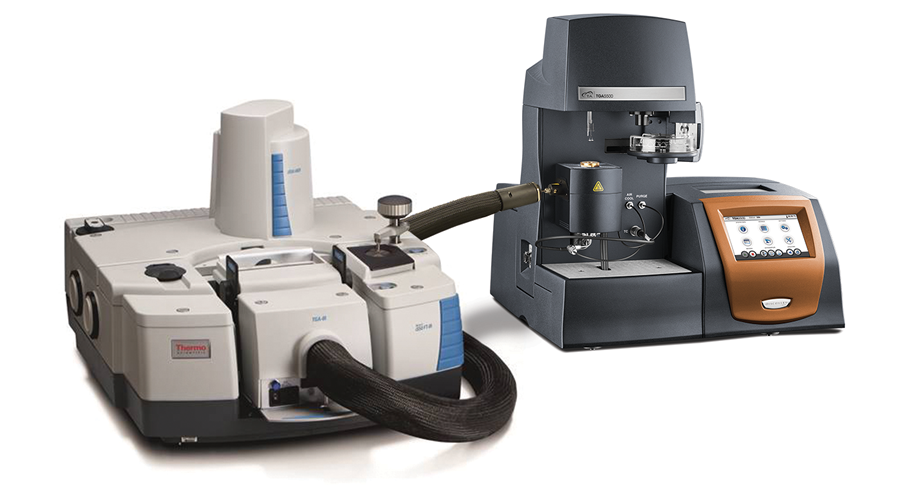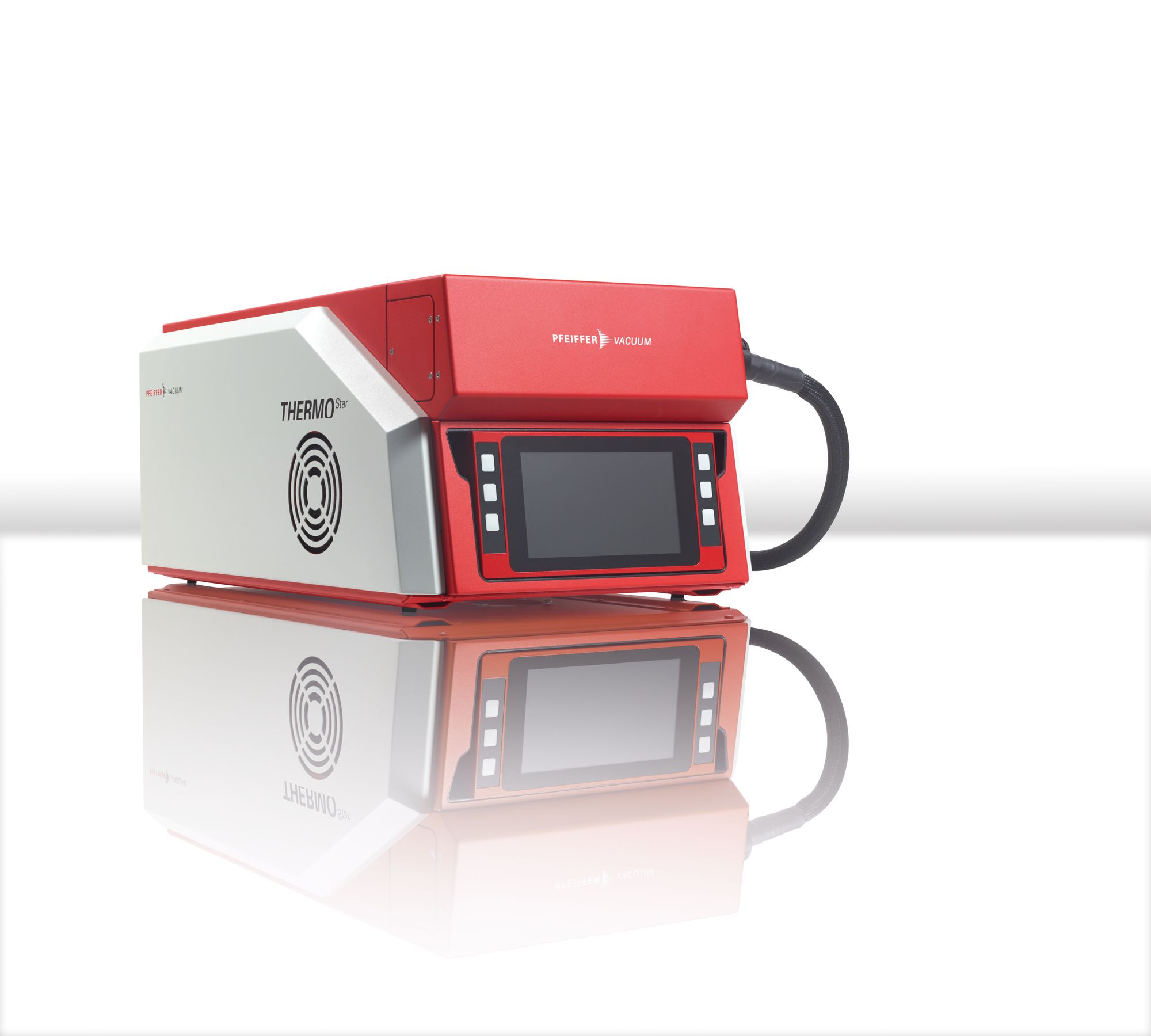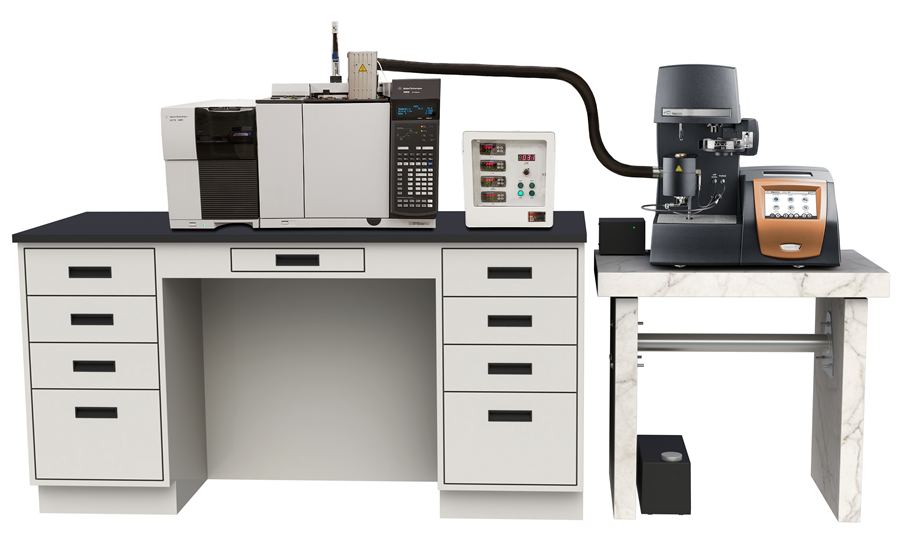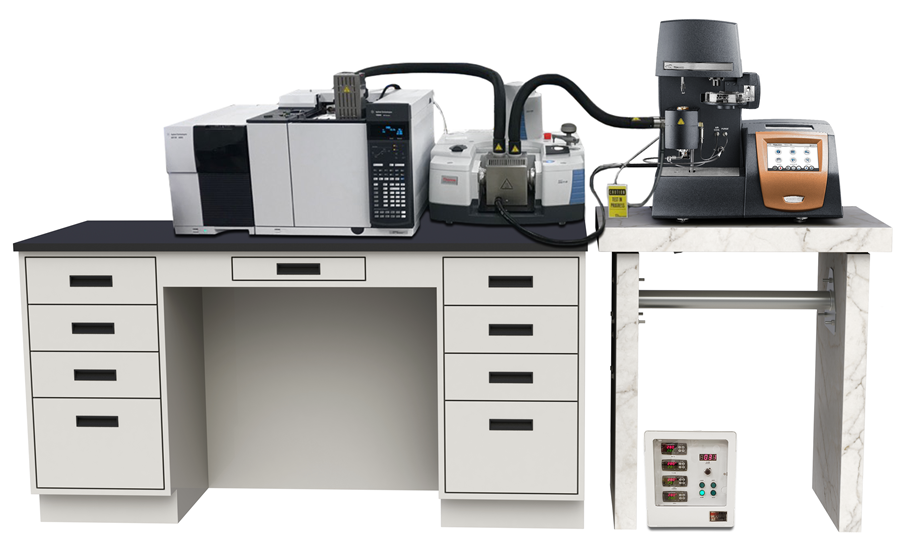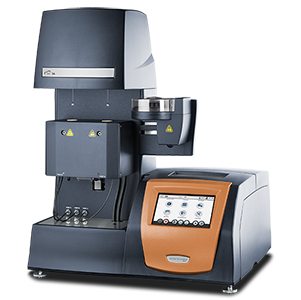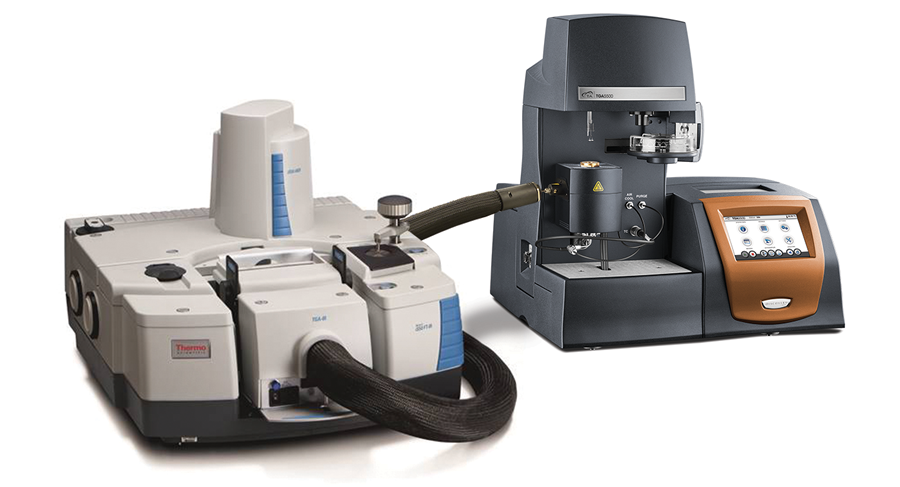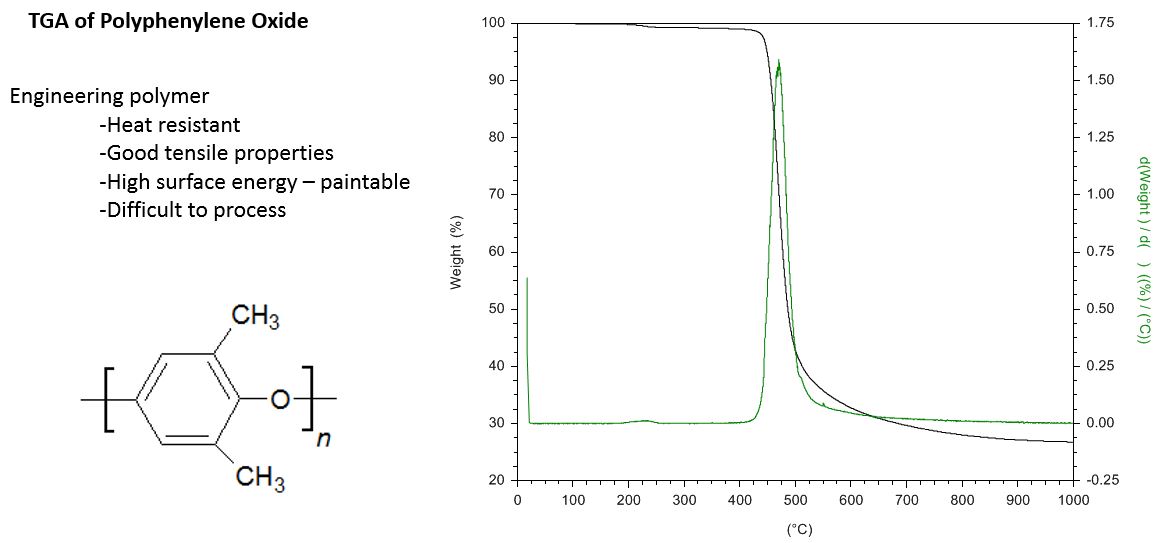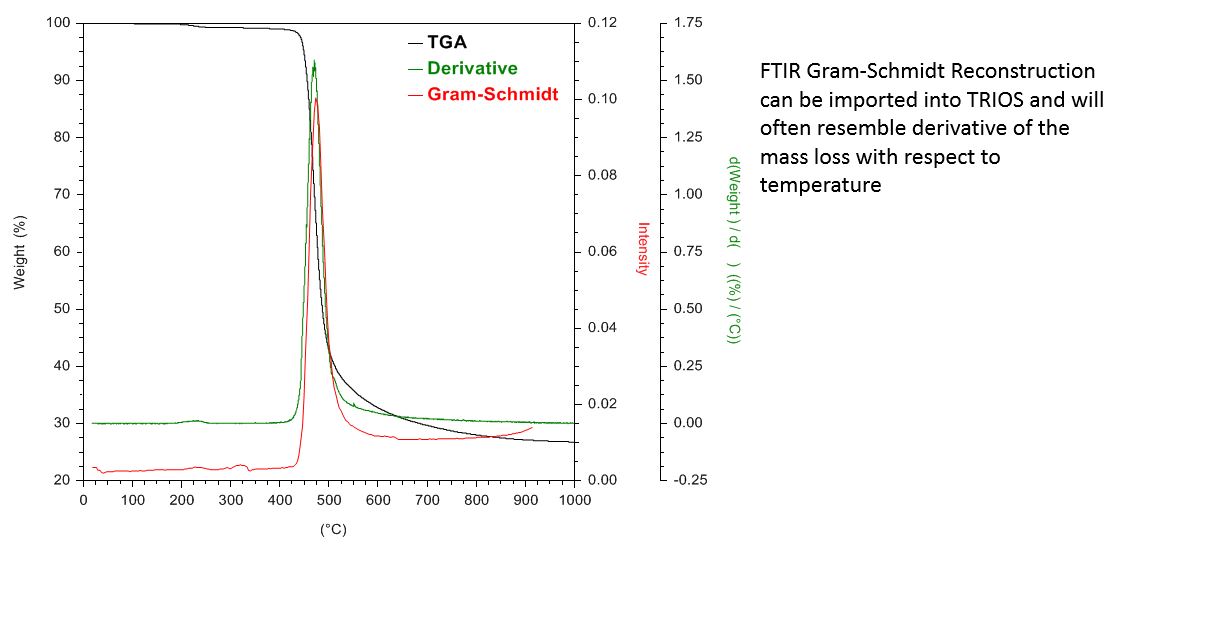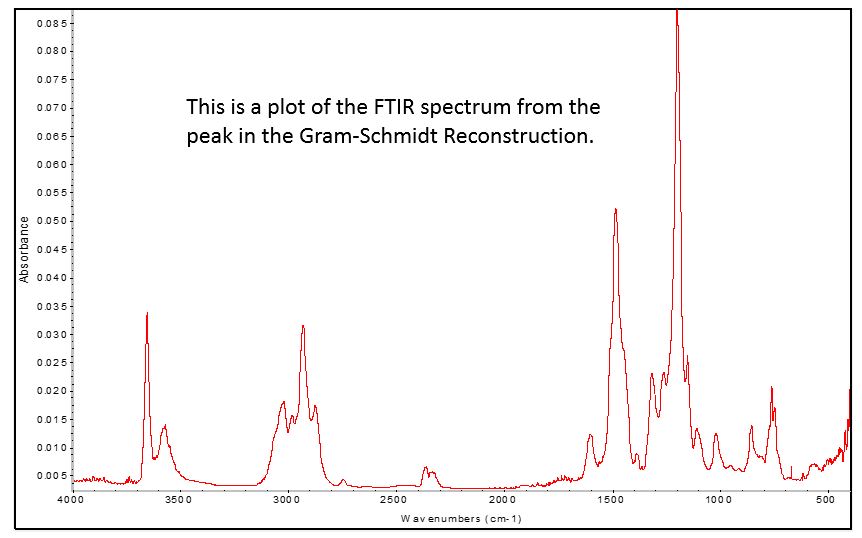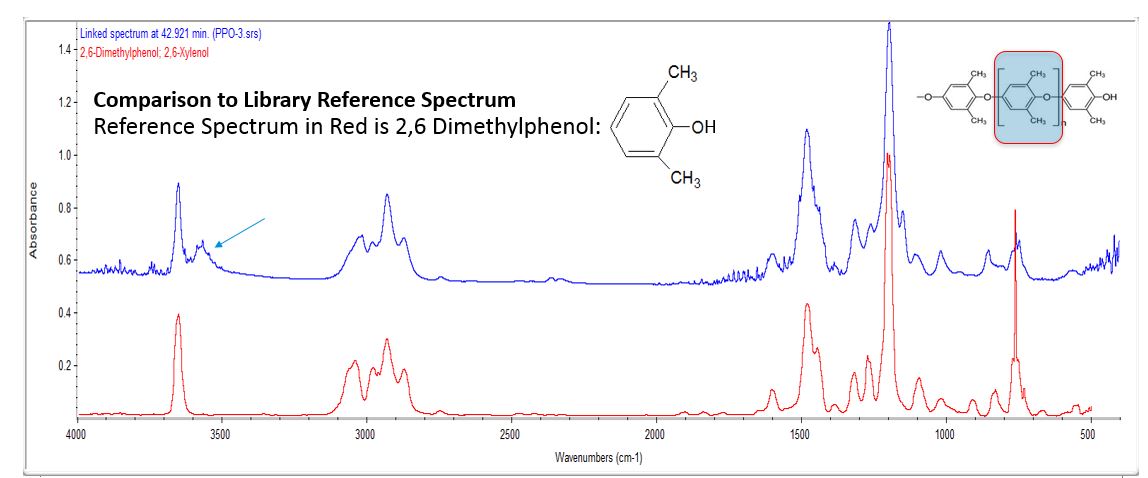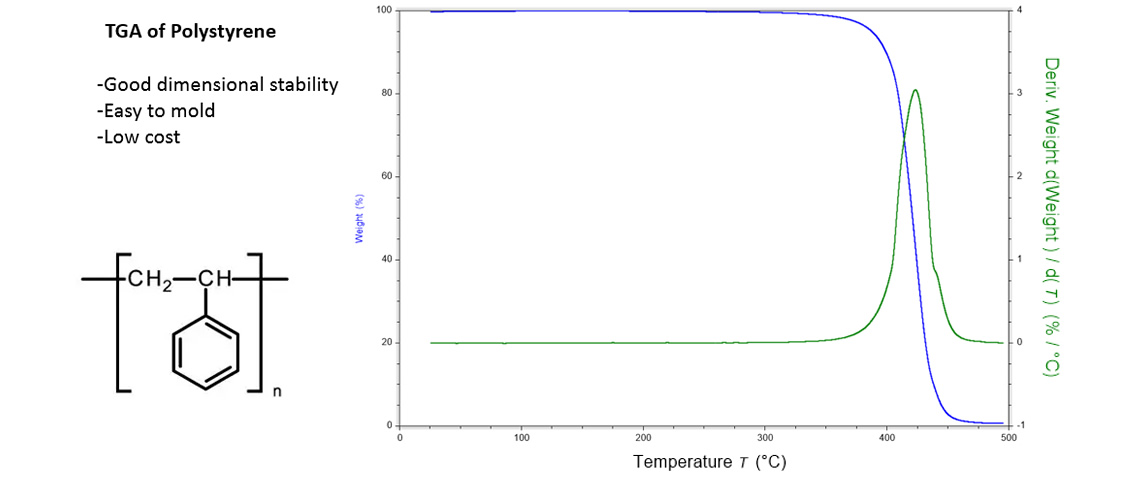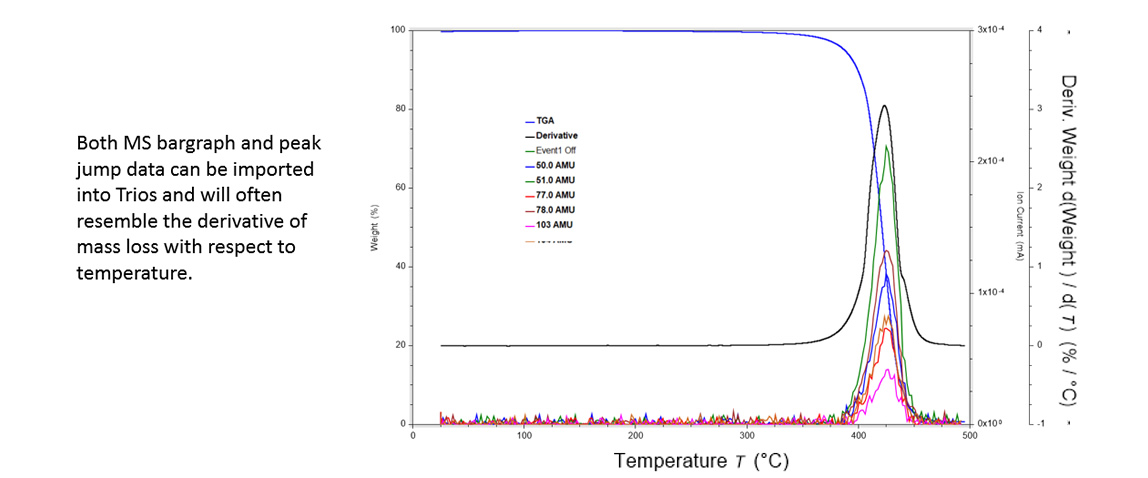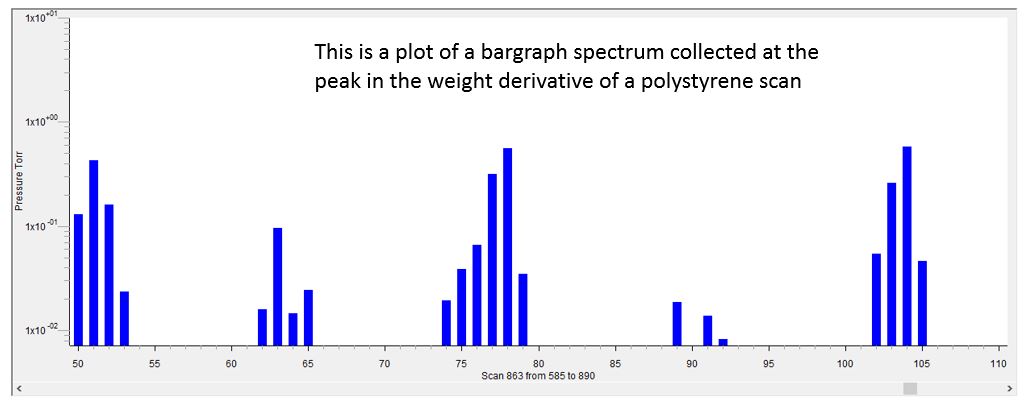Hyphenation refers to the process of connecting two or more instruments together for the purpose of increasing the amount of information obtainable from a sample.
Hyphenation refers to the process of connecting two or more instruments together for the purpose of increasing the amount of information obtainable from a sample. Hyphenating thermogravimetric analyzers (TGA) with mass spectrometers (MS) and Fourier Transform Infrared (FTIR) spectrometers has a long history. Zitomer1 was the first to report the hyphenation of a MS to a thermobalance in 1968, while Kiss2 reported the same for an FTIR and thermobalance in 1969. (For a history of evolved gas techniques, the reader is referred to Thermal Methods of Analysis, W.W. Wendlandt, 2nd edition, 1974.) The ability to combine spectroscopic data for the purpose of chemical analysis, with the mass loss data from the TGA has borne fruit over numerous material science fields. For example, the pharmaceutical industry routinely monitors for the presence of solvent in their products. Evolved gas analysis can provide information on degradation pathways, reaction products, and/or chemical composition.








